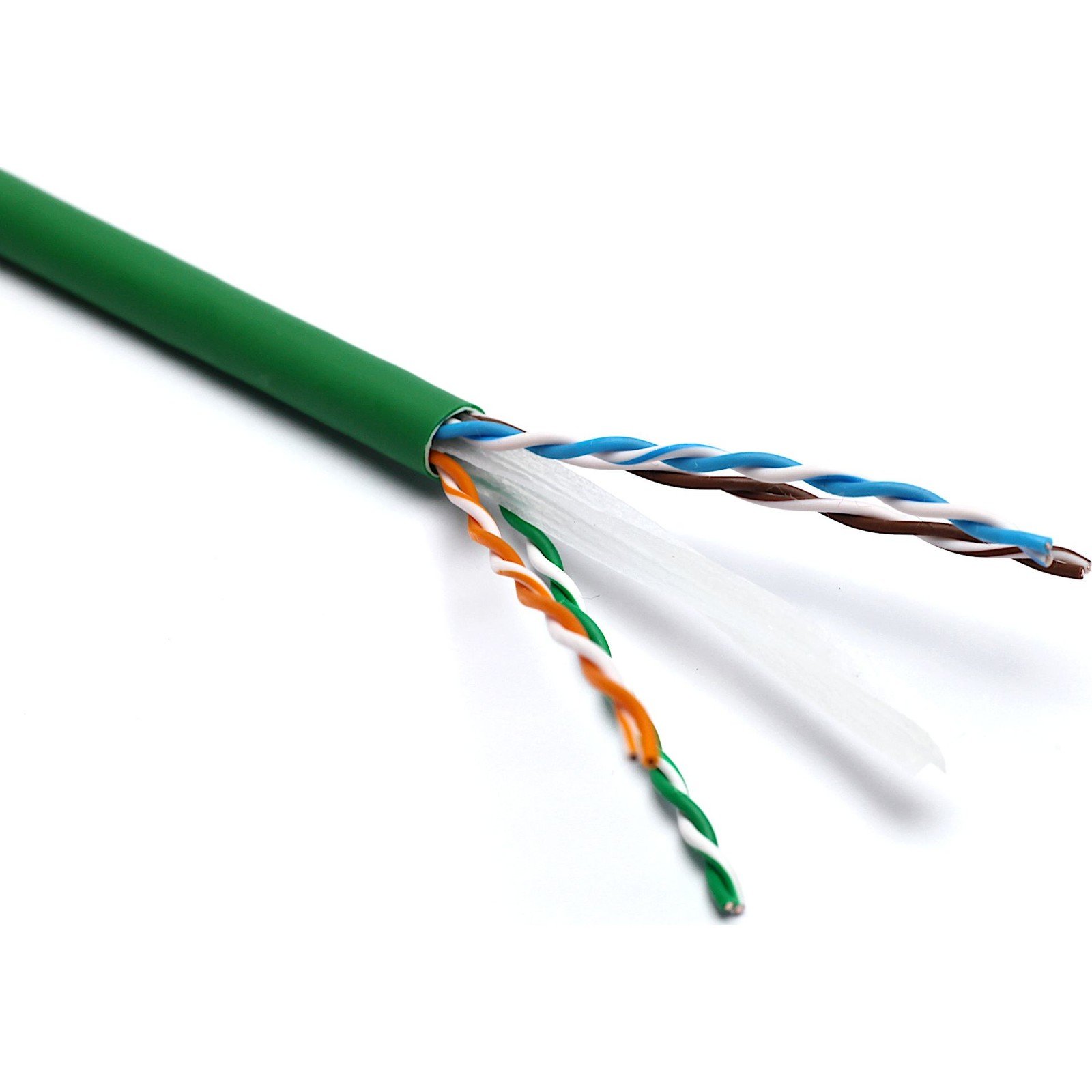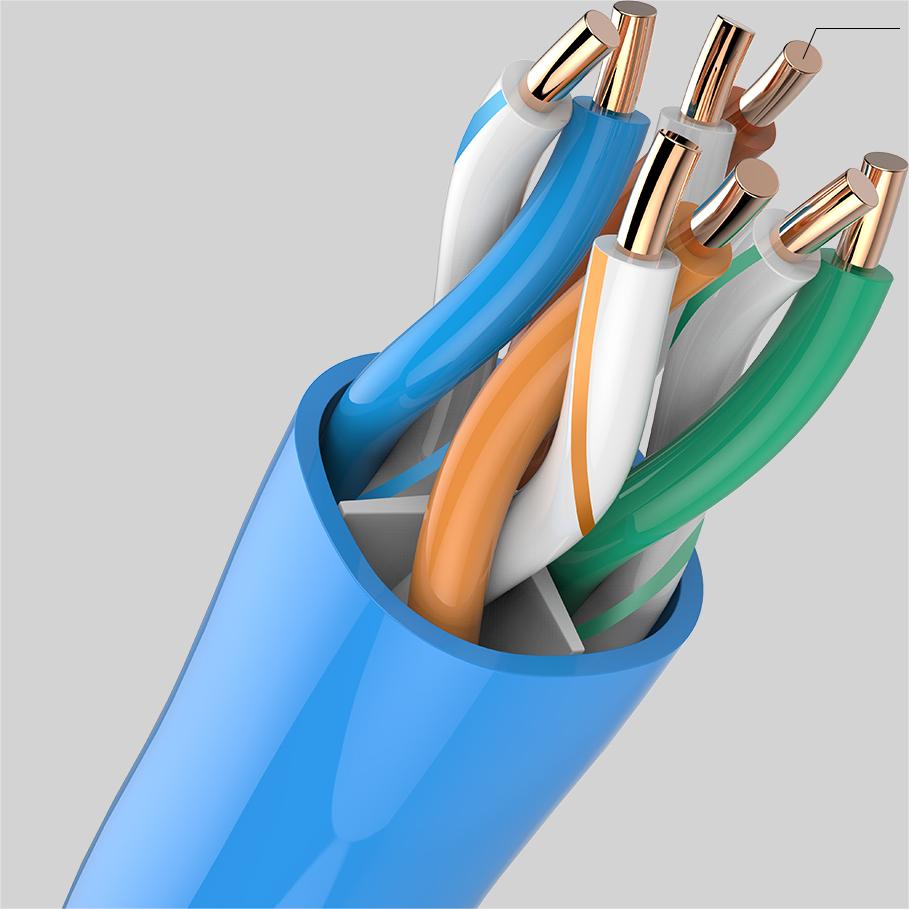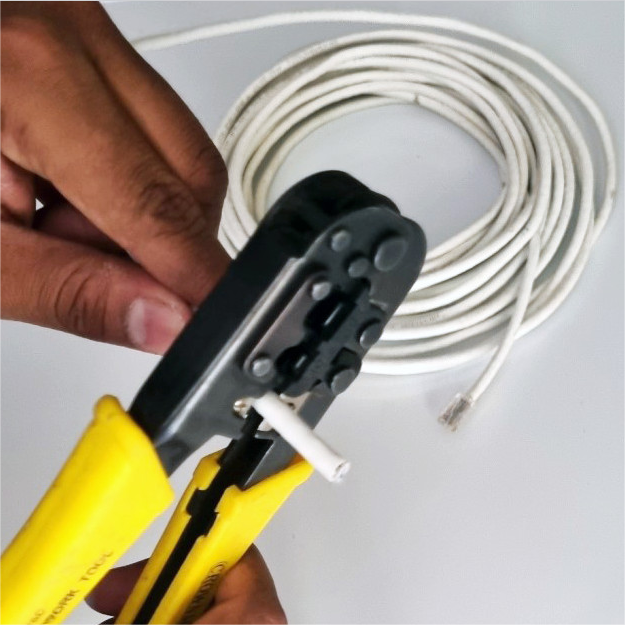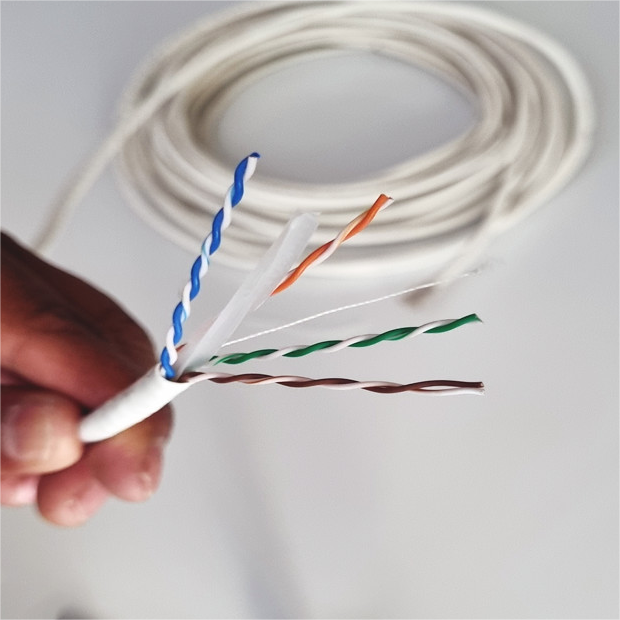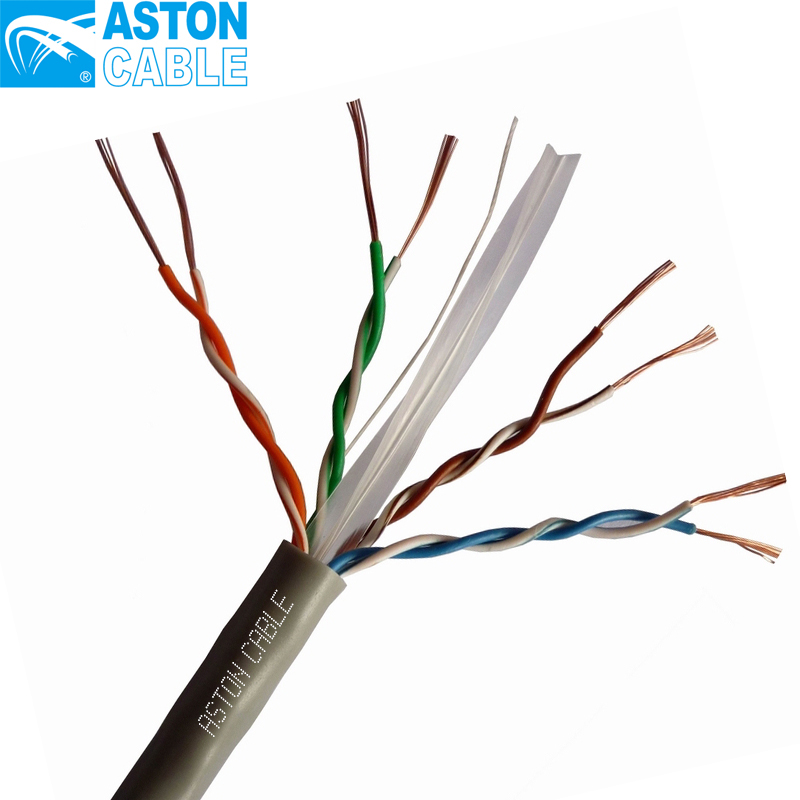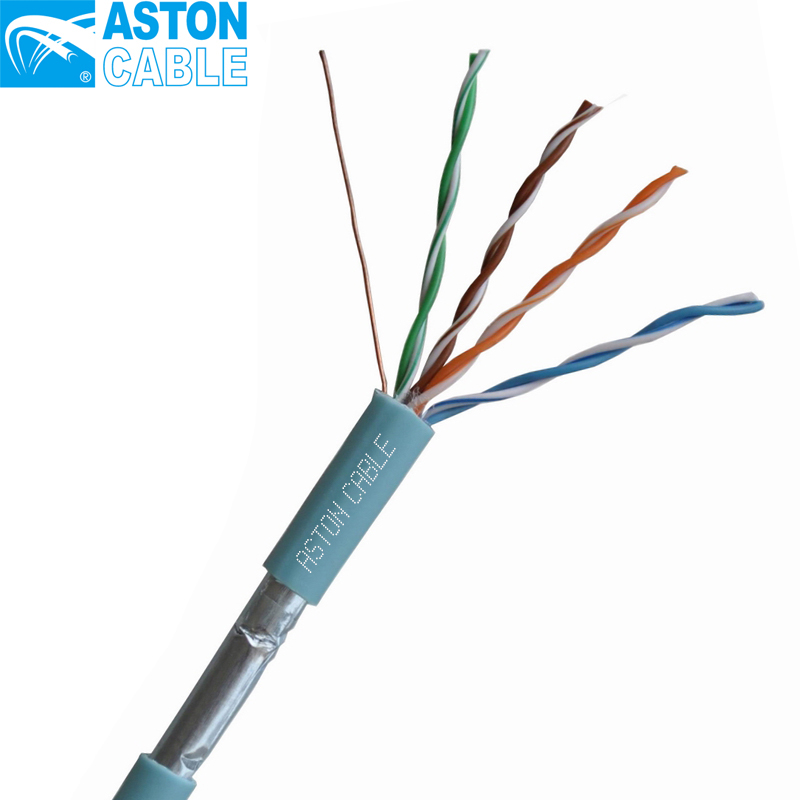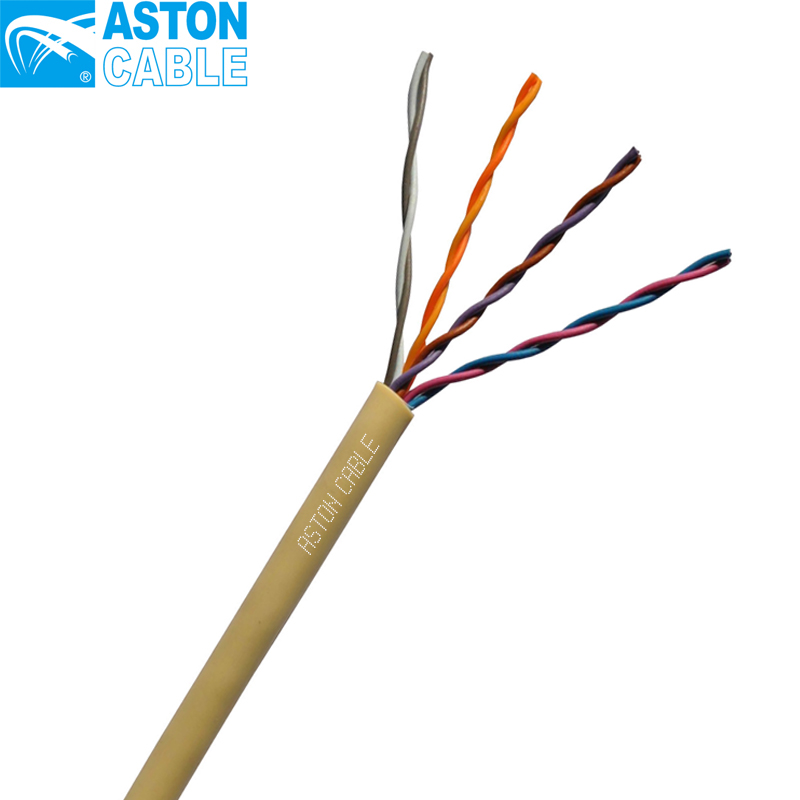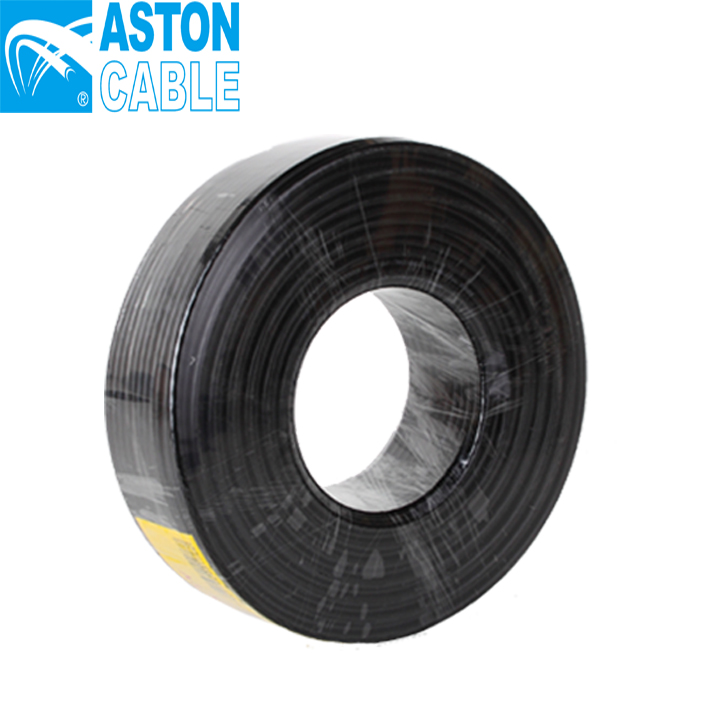Product Main Parameters
| Parameter | Specification |
|---|---|
| Conductor Material | Bare Copper |
| Gauge | 23AWG |
| Length | Customizable |
| Shielding | UTP/FTP/SFTP |
| Jacket | PVC, LSZH, PE |
Common Product Specifications
| Feature | Details |
|---|---|
| Outer Jacket | PVC, PE or LSZH; Flame Retardant meets IEC standards |
| Insulation | PE; Flame Retardant meets IEC standards |
| Frequency | 250 MHz (CAT6) |
| Minimum Order Quantity | 200 rolls |
Product Manufacturing Process
The manufacturing process of CAT6 cables involves several critical stages to ensure quality and performance. Initially, high-grade copper is drawn and annealed to form the conductor, which is then insulated with polyethylene to prevent signal loss. The insulated conductors are twisted into pairs, reducing electromagnetic interference and crosstalk. Depending on the shielding requirements, cables are then wrapped with foil or braided shielding to enhance protection against external interference. The outer jacket is extruded to provide durability and environmental protection. Advanced testing ensures compliance with standards like ISO9001 and IEC, ensuring reliability and longevity. This meticulous process, verified in multiple studies, ensures the CAT6 cable's capacity for high-speed data transfer, making it an ideal choice for modern network systems.
Product Application Scenarios
CAT6 cables are pivotal in modern networking environments, including residential, commercial, and industrial applications. They support Gigabit Ethernet and are backward compatible with previous standards, making them versatile for various setups. In residential settings, CAT6 cables enhance home networking systems, supporting smart home devices and high-speed internet. Commercially, they establish robust network backbones for offices, enabling fast and reliable communication between servers and workstations. Industrial applications leverage CAT6 cables in environments where electromagnetic interference is prevalent, thanks to their superior shielding capabilities. Research indicates that CAT6 cables provide a cost-effective solution for future-proofing networks, ensuring compatibility with emerging technologies such as 10-Gigabit Ethernet.
Product After-Sales Service
- Comprehensive technical support for installation and performance issues.
- Warranty covering manufacturing defects for a specified period.
- Flexible return policy for products not meeting quality standards.
Product Transportation
- Secure packaging to prevent damage during transit.
- Shipping options include express and standard delivery.
- Delivery available worldwide with tracking details provided.
Product Advantages
- High-quality copper conductor ensures superior data transmission.
- Various shielding options available for different environments.
- Compatible with modern and legacy Ethernet systems.
Product FAQ
- What factors influence CAT6 cable price?
The price is influenced by length, shielding, and brand reputation. Suppliers may offer discounts for bulk purchases.
- How does shielding affect CAT6 cable price?
Shielding, such as UTP, FTP, or SFTP, adds protection against interference. More shielding generally increases the price offered by suppliers.
- Are CAT6 cables suitable for outdoor use?
Yes, but ensure the cables have a protective outer jacket like PE or LSZH for environmental resilience, which may affect the price.
- What is the MOQ for CAT6 cables from suppliers?
The minimum order quantity is typically 200 rolls, but this may vary among different suppliers.
- Can CAT6 cables be used for 10-Gigabit Ethernet?
Yes, CAT6 cables support 10GBASE-T over a limited distance, ensuring high speed with proper application.
- How does the conductor material impact CAT6 cable price?
Bare copper conductors offer superior performance but may increase the price compared to alternatives like CCA.
- Why choose CAT6 over CAT5e?
CAT6 offers higher bandwidth and better interference protection, representing long-term investment efficiency.
- Are CAT6 cables compatible with older network devices?
Yes, CAT6 cables are backward compatible with CAT5e and CAT3 standards, making them versatile additions to networks.
- How does bulk purchasing affect CAT6 cable price?
Bulk purchasing can significantly reduce the per-unit price, making it cost-effective for large installations.
- What certifications should I look for in CAT6 cables?
Look for cables with certifications such as ISO9001, CE, and RoHS to ensure quality and compliance.
Product Hot Topics
- Choosing the Best CAT6 Cable Suppliers
With numerous CAT6 cable suppliers available, selecting the right one involves evaluating their reputation, product quality, and certification compliance. High-quality manufacturers like Aston Cable offer reliable products that guarantee efficient data transmission and minimal signal loss. Customer reviews and industry ratings can provide valuable insights into supplier reliability. Additionally, considering factors like delivery options, after-sales support, and flexible pricing can influence the decision.
- Understanding CAT6 Cable Price Dynamics
The CAT6 cable market is subject to various economic and technological influences. Fluctuations in raw material costs and advancements in technology can alter pricing trends. For instance, as newer cable standards emerge, CAT6 prices may adjust due to shifting demand. Suppliers often provide competitive pricing strategies to maintain market relevance, so staying informed about these dynamics helps in making informed purchasing decisions.
- The Impact of Shielding on CAT6 Cable Performance
Shielding is a critical aspect of CAT6 cables, especially in environments prone to electromagnetic interference. Suppliers offer different shielding options like UTP, FTP, and SFTP, each catering to specific needs. SFTP cables, for example, provide superior protection by incorporating a braided shield over the foil, ideal for industrial settings. Understanding the role of shielding can influence the choice based on performance needs and CAT6 cable price considerations.
- Cable Length and Its Effect on CAT6 Cable Price
Cable length is a significant determinant of CAT6 cable price. Shorter cables are more affordable and suitable for close-proximity connections, while longer cables incur higher costs due to increased material usage. Suppliers often offer customizable lengths to meet specific installation needs, allowing buyers to optimize costs without compromising on performance.
- The Role of Certifications in Selecting CAT6 Cable Suppliers
Certifications like ISO9001, CE, and RoHS are essential markers of quality assurance in CAT6 cables. Such certifications ensure that products meet international standards for safety and performance. When selecting suppliers, checking for these certifications can be a decisive factor, guaranteeing that the CAT6 cable price reflects a high-quality product that aligns with industry norms.
- Exploring Advanced Applications of CAT6 Cables
Beyond standard networking, CAT6 cables are finding use in advanced applications such as high-definition video streaming, and virtual reality setups. These cables' higher bandwidth capabilities support these data-intensive applications efficiently. As technology evolves, the role of CAT6 cables continues to expand, influencing their market relevance and price dynamics offered by suppliers.
- Comparing CAT6 with Emerging Cable Technologies
As new ethernet standards like CAT7 and CAT8 emerge, it is crucial to compare them with CAT6 to understand each one's advantages and limitations. While CAT7 offers even higher speeds and improved shielding, CAT6 remains a cost-effective solution for many installations. Suppliers offering competitive CAT6 cable prices enable businesses to balance current needs with future scalability considerations.
- Evaluating Environmental Factors in CAT6 Cable Selection
Environmental considerations like temperature, moisture, and physical stress can affect cable performance and longevity. Suppliers provide options like LSZH (Low Smoke Zero Halogen) jackets for improved safety and durability in challenging environments. When evaluating CAT6 cable price, incorporating environmental compatibility ensures long-term reliability.
- The Advantages of Bare Copper Conductors in CAT6 Cables
Bare copper conductors are popular for their excellent conductivity and signal clarity, enhancing data transmission efficiency. Compared to alternatives like CCA (Copper Clad Aluminum), bare copper provides superior performance but may affect the CAT6 cable price. When sourcing from suppliers, assessing conductor material is crucial for optimal network efficiency.
- Network Systems Designing with CAT6 Cables
Designing network systems using CAT6 cables involves strategic planning to achieve maximum performance and cost-effectiveness. Understanding infrastructure needs, device connectivity, and future scalability are pivotal in selecting the right suppliers and configurations. CAT6 cables' diverse offerings ensure adaptability for various networking scenarios, making them a staple choice in modern network designs.
Image Description

